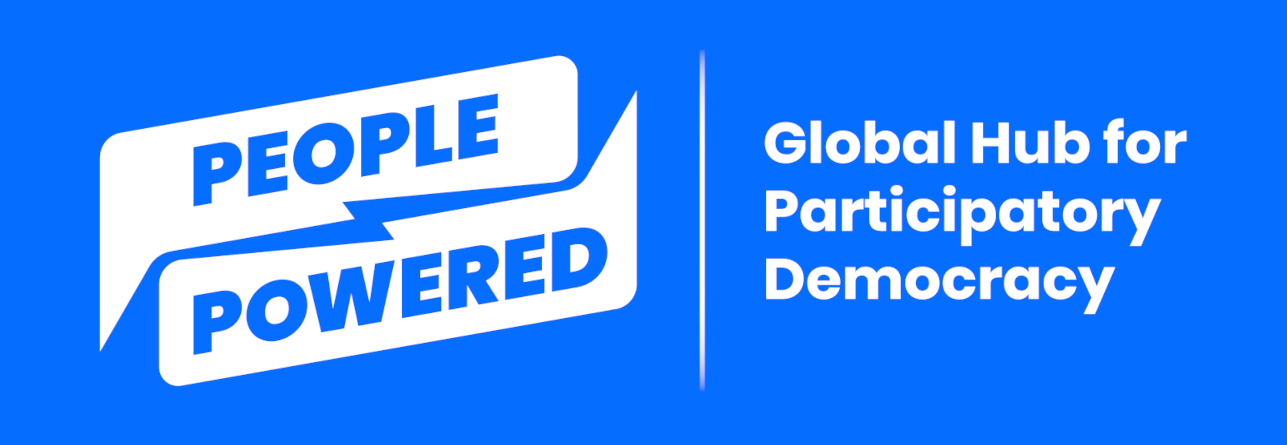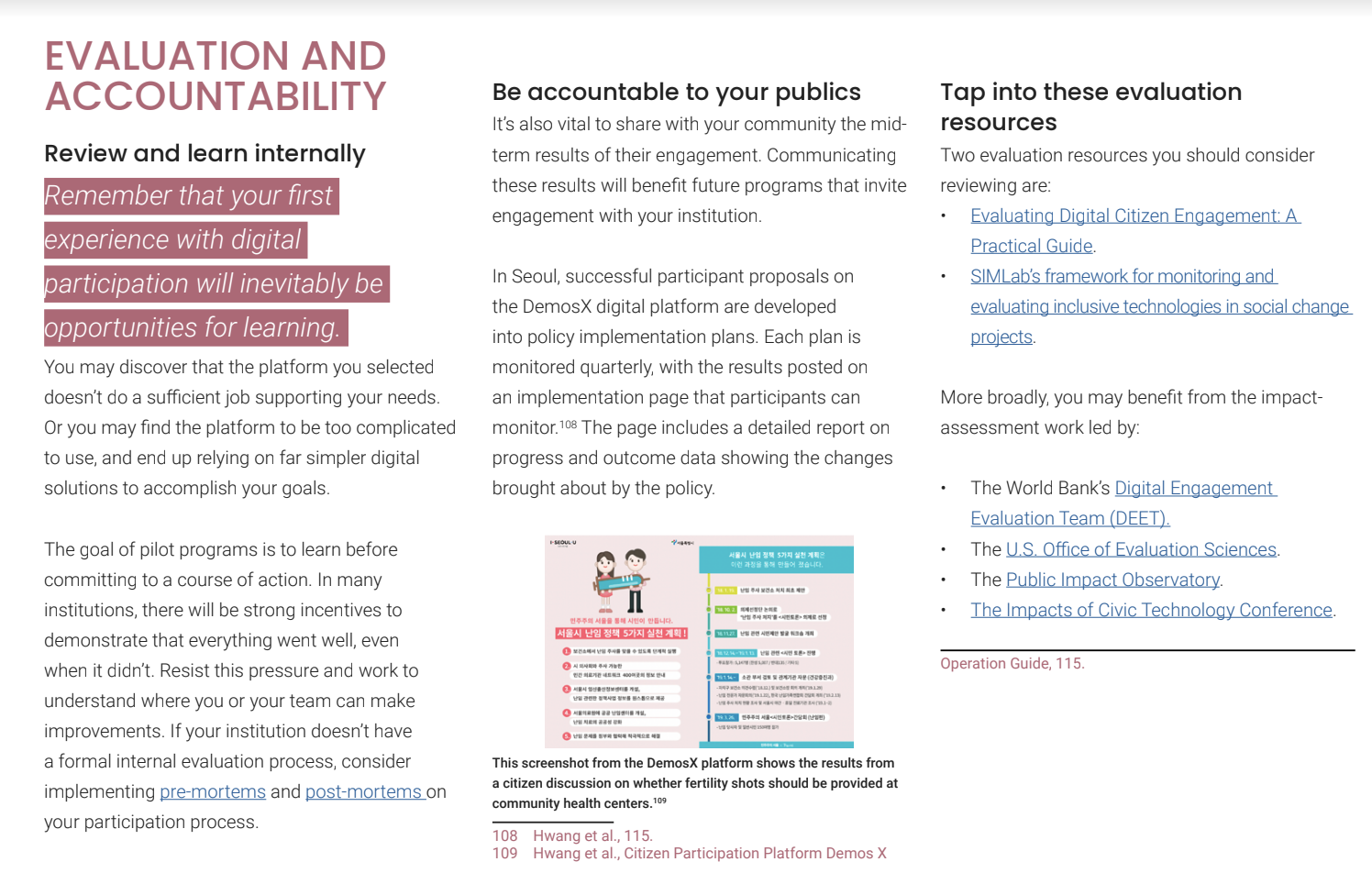Q&A: COVID, Civic Tech and Participatory Democracy
/This is the third interview in a series designed to share some of the thinking that helped plan and shape our new Guide to Digital Participation Platforms. Previously, People Powered Communications Director Pam Bailey interviewed Matt Stempeck, the principal author of the guide, and Melissa Zisengwe, a member of the Technology Review Committee from South Africa.
Here, Pam interviews another committee member, Katya Petrikevich, cofounder and international director of Participation Factory, a People Powered member organization from Czech Republic. From its website: “Participation Factory is a social enterprise that mainstreams participation and data-driven approaches into governance and process design.”
How did you find your way to a life focused on citizen participation via civic tech?
My background is in political science, and specifically in decision making and the behavior of citizens in democratic and nondemocratic environments. Around six years ago, I started working for a Czech-based civic tech company called D 21, or Democracy 21, which at the time developed technology for surveys that allowed multiple positive and negative votes. That meant that points of consensus, rather than just pure winners, could be identified. It was quite innovative at the time, and was my gateway into civic tech.
Katya Petrikevich
One of the things I noticed, though, is that civic tech by itself doesn’t deliver robust participation. It's a tool that must be supported by thorough planning, a well-thought-out process, and outreach around it. That’s when I launched Participation Factory with my business partner Tomas Rakos.
From your perspective, what are the most significant drivers of the growth of civic tech in the public-participation space?
A lot of online civic engagement first started happening because the existing space for political and social participation wasn’t open enough. So, people started to build spaces online because they weren’t as censored or exclusive. Social media weren’t enough, because they have limitations that don’t enable structured participation, and the community needed more than just comments, likes, and dislikes. We wanted a space that wouldn’t just create the echo chambers that exist on Facebook and Twitter.
But more recently, the COVID pandemic has had a big impact. On the one hand, specific, participation-driven projects, like participatory budgeting, were postponed, reframed, or reshaped in a lot of places. But at the same time, governments realized they needed to communicate super fast, super effectively, with as large of a number of people as possible. And they couldn't do it in person. So, civic tech became massive.
That’s been true in Czech Republic. Within the first couple of months of the pandemic, the use of civic tech skyrocketed, with platform developers even giving away free basic subscriptions. The number of municipalities starting to use them multiplied by the hundreds. And I think this increased use of civic tech is here to stay.
Are there any downsides to this rush into civic tech?
It’s important that users realize that civic tech is not a solution by itself, but a tool. Whenever we consult with governments around civic tech, we try to make sure it is as interconnected as possible. It’s always important to remember that digital participation isn’t right for all segments of the public. Let’s say we're in a very rural area with low penetration of the internet, for example. We’d never look at civic tech as the primary or a stand-alone solution for this population. In our practice, whenever we plan a digital track for participation, we always include an in-person channel as well. For example, as the People Powered guide describes, participation stations set up in public places are often useful, so that people can stop by and see the technology demonstrated or have someone help them register on their smartphone. There are many different ways to overcome or compensate for the so-called digital divide.
What about the deliberation component of participatory democracy? To what extent does the use of online platforms impact the degree of conversation possible?
Neighborland, one of the featured digital participation platforms
It’s true that with online platforms, you can’t replicate the conversation–including the empathy and sense of community–possible in person. But I think the quality of deliberation can be greatly increased by structuring the process with that in mind. It might just mean adding one extra question. For example, let’s say you’re working on a proposal for participatory budgeting. When other people are in the room, planning it with you, everyone will automatically hear each other’s opinions. So, you're more likely to think about how your project could benefit them. Doing this online is a bit harder. But just adding one question, probing how the project could benefit the community at large, will push people toward thinking about it.
What would you say to people who aren’t sold yet on going digital in any kind of significant way?
The advent of online tools for public participation has, overall, greatly increased the number and types of people you can engage. For example, some people aren’t comfortable speaking in public. Maybe they don't want to be the center of attention in a big group. Or, as with new immigrants, they may not be comfortable speaking the dominant language. I know that in Czech Republic, many members of the Vietnamese community might not feel comfortable speaking Czech in front of others. They could be more comfortable participating online, either because they have the option to post in Vietnamese and have it auto translated, or purely because they have more time to write their answers out. Another example of people who are often left out of in-person participation are individuals with disabilities who might not have the mobility to leave their homes but can participate online.
The other big benefit of civic tech is that you can collect a lot of data immediately, and evaluate it using techniques such as sentiment analysis.
How does the People Powered Guide to Digital Participation Platforms contribute to the field and what is already available?
The fact that the guide brings all of this information together in one place is amazing, because until it was developed, there wasn’t a comprehensive overview of what civic tech is and can do. The Technology Review Committee tried to make sure that even people who have no experience with participation and know nothing about civic tech can understand it. One of the dangers we identified and tried to avoid is that civic tech and participation are often seen as an elite activity for those communities with enough money, resources and capacity. We wanted to make sure that people understand that anybody can benefit from participatory democracy and civic tech, and that they can be applied to a wide variety of processes; it’s not just for voting or submitting complaints. The guide kind of nudges readers toward thinking about civic tech more broadly.
The guide is quite long and might be intimidating at first glance. How would you suggest people ‘use’ it?
I always like to start from the place of, “what do you need?” Even before you open the guide, think about why you want to look at it. Do you just want to learn more about digital participation? Do you already have a specific participatory process in mind? Do you have a community who is demanding that you do something?
It’s also important to be aware of the limitations of what you know. If you haven't led or facilitated a participation process yet, or you haven’t experimented with civic tech, you don't know what you don't know. So, come to this guide with an open mind.
One of the dangers of learning about civic tech is getting excited about a specific tool and then purchasing it, without thinking critically about how it would benefit your community, or whether it fits your process. I’ve seen it happen a lot of times. The tool ends up not generating significant engagement, not because it is flawed, but because it doesn't fit the needs. So my advice is to focus first on figuring out what you actually need.
It’s also important to understand the limitations of the guide. It's a wonderful starting point; it's a really comprehensive overview of what's out there. But it's by far not exhaustive. There's so much more out there. For example, there are plenty of civic tech tools developed in Czech Republic, and I'm happy that some of them even made it into the guide. But because we are in a region that’s rather isolated in terms of language, I always cry a bit on the inside when I look at sites like Participedia and the PB Atlas. Because I know that they are incomplete; there is so much that is not publicly known yet about Czech Republic and Central Eastern Europe, just because of this divide when it comes to language and exposure.
My final advice, with which I began this interview, is to remember that civic tech is a tool, an instrument that can help you make participation in your community better, but it's not going to work by itself. It needs a structure around it and a very specific plan for how to execute it. If people are not engaging with you, civic tech or not, it means they don't see why they need to engage. And that’s a challenge only you can solve.






